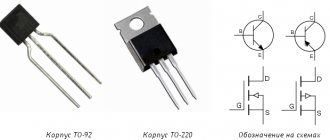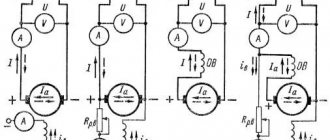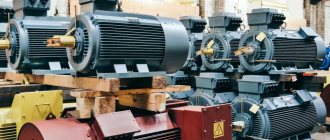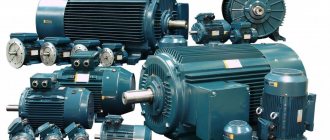The situation when the power goes out is familiar to many. But it happens that there is no electricity in the room at all and there is nowhere to supply it. Construction of a country house, the need to work in the field, periodic accidents at power plants - all this leads to the idea of buying your own autonomous power plant. This is exactly how a modern compact electric generator should be perceived.
Electric generators are used in almost all areas of activity where it is necessary to ensure constant or autonomous power supply. They are especially necessary where the work process cannot be interrupted even for a minute.
Generators vary greatly in their characteristics, and understanding them at first glance is quite difficult. We decided to present the main differences between electric generators that operate on different types of fuel.
What are the features of gasoline generators
Such a generator is a source of electricity of relatively low power, so it is worth buying only if there is no need for uninterrupted operation of the network. Its limit is 12 hours of continuous operation. During an hour of operation, such a unit consumes approximately 1-2.5 liters of fuel.
The undoubted advantage of a gasoline electric generator is that it is not afraid of temperature changes and can operate in any weather. It is most often used in household farming; it is also suitable for a country house. Such installations are usually light in weight, so they can be taken on a hike.
There are also digital gasoline generators, they are often called inverter generators; they have special electronics installed that allow them to receive electricity from the engine and convert it into a voltage of 220 volts.
What are the pros and cons of using gas electric generators?
Such generators run on natural gas and propane-butane mixtures. Their power ranges from 1.5 kW to tens of thousands. Even with low gas pressure, this device will provide you with electricity. And the uninterrupted operation time of a conventional gas generator from a 50-liter cylinder is about 20 hours. One of the most important advantages of gas electric generators is their environmental safety. Due to the absence of large-scale exhaust gases, which are so often found in gasoline models, gas generators are practically non-toxic.
It is also worth considering that the engine of such a unit can only be started at positive temperatures, so it is advisable to install it in a heated room. Among the advantages, it is worth noting the silent operation of gas electric generators, as well as the absence of vibration (low pressure on the engine piston), continuous fuel supply and high efficiency of use.
Gas generators are used in most cases where large amounts of electricity are consumed (from 500 kW). Their small size ensures compactness, which is quite an important factor in production. This unit will cope with all the tasks assigned to it: it can be used for agricultural needs, shops, warehouses and other premises. Although recently gas generators have become popular in everyday life.
Electric generator: classification and areas of use
An electric generator is a technological device that converts thermal, chemical or mechanical energy of rotation of the engine shaft into electrical energy.
It is used as a source of backup power supply for various household and industrial consumers in cases of power outages, as well as to ensure constant power supply to country and cottage houses, exhibition and trade pavilions, remote from the main power grids of settlements, summer camps, workers' settlements, etc. d. Electric generator: classification and areas of use
An electric generator is a technological device that converts thermal, chemical or mechanical energy of rotation of the engine shaft into electrical energy. It is used as a source of backup power supply for various household and industrial consumers in cases of power outages, as well as to ensure constant power supply to country and cottage houses, exhibition and trade pavilions, remote from the main power grids of settlements, summer camps, workers' settlements, etc. d.
Electric generators are classified according to the following most important technical and operational parameters:
- scope of application;
- type of fuel used;
- number of phases;
- power.
Depending on the scope of application, household, professional and industrial electric generators are distinguished.
A household electric generator is a compact power unit with a power from 0.7 to 25 kW, equipped with a gasoline or diesel internal combustion engine with an air cooling system. It is used primarily to provide autonomous (backup) power supply to low-power household appliances, country and cottage households, plumbing workshops, and various power tools on construction sites. It is characterized by ease of operation and maintenance, low weight, low vibration and noise levels. A professional electric generator is used as a source of constant power supply to hospitals, administrative and office buildings. A professional electric generator is used as a source of constant energy supply to hospitals, administrative and office buildings. This type is widely used in the construction industry, during emergency, road construction work. The advantages of professional units are high engine life, economical fuel consumption, high reliability when operating in extreme conditions. Disadvantages include significant weight and high noise levels during operation.
A high-power industrial electric generator (over 100 kW) is used to supply power to electrical equipment of large production enterprises in various industries, factories and industrial stations. It is characterized by high reliability, large dimensions, and difficulty in maintenance.
Depending on the type of fuel used, the following types of electric generators are distinguished:
- gasoline;
- diesel;
- gas.
A gasoline electric generator generates electricity using the mechanical energy of rotation of the shaft of a gasoline internal combustion engine.
It is characterized by a limited power range (from 0.7 to 18 kW), mobility, relatively light weight, and ease of use. It is used mainly as a backup source of energy supply for small country houses, summer houses, and camps. Due to the small engine life (500 engine hours) and the high cost of generated electricity, it is practically not used for constant energy supply. The diesel electric generator is characterized by a wide power range and long engine life (over 5000 operating hours). These universal power plants are used for backup power supply to villages, hospitals, schools, and various industrial and construction equipment. Due to the significant weight (from 450 kg or more) and the high noise level during operation, they are installed on a reinforced foundation, in separate soundproofed rooms. The scope of application of the gas electric generator is industrial enterprises in various sectors, private households, exhibition and trade pavilions. Power plants of this type are characterized by ease of operation and maintenance, high environmental friendliness, low cost of fuel consumed and generated electricity.
Depending on the number of phases, electric generators are divided into single-phase and three-phase. Single-phase 220 V generators are used to power devices with 1-phase power supply, in electrical networks with 1-phase wiring. Three-phase electric generators for 220 and 380 V are used to supply electrical energy to houses with 3-phase network wiring, 1- and 3-phase appliances, evenly distributing power between each phase.
The power of electric generators is measured in both kilovolt-amperes (kVA) and kilowatts (kW). There are rated and maximum (maximum) power. The electric generator operates at rated power most of the time, at maximum power – only for a few seconds.
The power of a specific generator set model depends on its purpose and the type of fuel consumed. Thus, the power range of gasoline electric generators is from 0.5 to 18 kW; diesel - from 20 to 450 kW and more; gas - from 20-25 to 400 kW and more.
The total power of all energy consumers connected to the electric generator (including those with high starting currents) must be taken into account when choosing it. This is due to the fact that many household and professional electrical appliances, when turned on, consume much more energy than in normal operation. Therefore, to ensure reliable and safe operation of all devices, as well as the electric generator itself, a power reserve of 20-30% should be provided.
What is a synchronous and asynchronous generator
Inverter generators differ from synchronous generators in that they produce a smoother current sinusoid, that is, the alternating current is of high quality, without surges and drops, which is most important for delicate equipment such as computers, LCD TVs, etc. Asynchronous type generators are insensitive to short circuits and have a high degree of protection from external influences. But with this design, the rotating magnetic field of the rotor cannot be adjusted, so the frequency and voltage at the generator output depend on the stability of the engine. So an asynchronous generator is suitable only for electrical appliances that do not have high starting currents and are resistant to voltage surges.
Synchronous generators are the most common type of gasoline generators; they are used to provide power to household appliances and emergency lighting for a period of no more than 8 hours.
Alternating current generator device
So, regarding the design of the alternator and the principle of its operation.
The most widespread are alternating current generators with a fixed conductor. This is due to the fact that the excitation current in relation to the current received from the generator is small. If you look at the picture, you will see two rings through which the excitation winding current flows and this is the weak link of any generator with an excitation winding. That is, either we supply a small excitation current through the rings through the brushes, or we remove a large operating current through the rings. In electricity, the stationary part of generators or motors that contains the winding is called the stator. The moving part may be called a rotor or armature.
Main types of alternating current generators
There are quite a few types of generators. Let's try to classify them according to their main areas.
- By type of energy used: Wind energy
- Gas energy
- Liquid fuel energy
- Heat energy
- Water energy
- Single phase
There are other types, but they are less common.
- By type of excitation: Independent excitation. In this case, on the same shaft with the alternating current generator there is also a direct current generator, which powers only the excitation winding. In this case, excitation can be performed by any other current source, for example, a battery.
- Self-excitation. In this case, the voltage for the field winding is obtained directly from the generator used.
- Excitation using magnets that are located on the stator or armature, which greatly simplifies the design of the generator, but using this method it will not be possible to obtain powerful generators.
Synchronous generator: circuit, device, principle of operation
What does synchronous mean in relation to a motor or generator? To put it very simply, the frequency of alternating current strictly depends on the rotation speed of the rotor of the electric machine and vice versa. In this way, the frequency of the alternating current can be controlled relatively easily. The synchronous generator itself has a number of advantages, thanks to which it has become the most widespread. I’ll tell you a big secret, it is synchronous generators that are used at all stations where electricity is produced.
The drive motor (designated as PD in the diagram) can be any rotating device: engine, turbine, windmill or water wheel impeller. On the same shaft with the PD there is a generator rotor with an excitation winding. A constant voltage is applied to the winding and a magnetic field is formed around the winding. When the rotor rotates, an EMF appears in the stator windings, that is, a voltage appears, only now variable, the frequency of which depends on the rotation speed of the rotor n1 and the number of pole pairs p. The EMF frequency can be calculated using the formula.
Asynchronous generator: circuit, device, principle of operation
Asynchronous generator device
An asynchronous generator is essentially an asynchronous motor. That is, any asynchronous motor can be switched to energy generation mode and vice versa. Structurally, the device, which is called a generator, is designed in such a way as to have good cooling. We will not dwell deeply on the principle of operation of asynchronous machines, but I will briefly tell you why they are called asynchronous using the example of a motor.
When voltage is applied to the stator windings, a magnetic field is formed; for three-phase motors it is circular, for single-phase motors it is ellipsoidal, tending to be circular. The magnetic field begins to cross the turns of the stator winding. In the short-circuited winding of the rotor, an EMF arises, that is, voltage, and since the winding is short-circuited, a current begins to flow through it, which also creates a magnetic field. The interaction of these magnetic fields causes the rotor to move. What will happen if the speed of the rotor becomes equal to the speed of the magnetic field created by the stator? That's right, the stator magnetic field will stop crossing the rotor winding. This can be compared to two cars moving at the same speed. The cars seem to be moving, but at the same time, in relation to each other, they seem to be standing still, the ground is simply rushing under the cars at high speed. So, as soon as the rotor speed and the speed of the stator magnetic field become the same, EMF will no longer be generated in the rotor winding, the interaction of the magnetic fields of the stator and rotor will stop, and the rotor will begin to stop. Therefore, the rotation speed of the rotor of an asynchronous motor is always slightly less than the rotation speed of the stator magnetic field, and this value is called slip.











